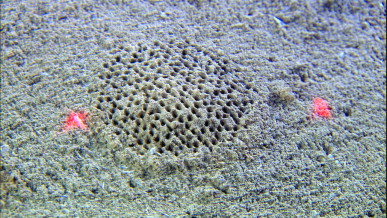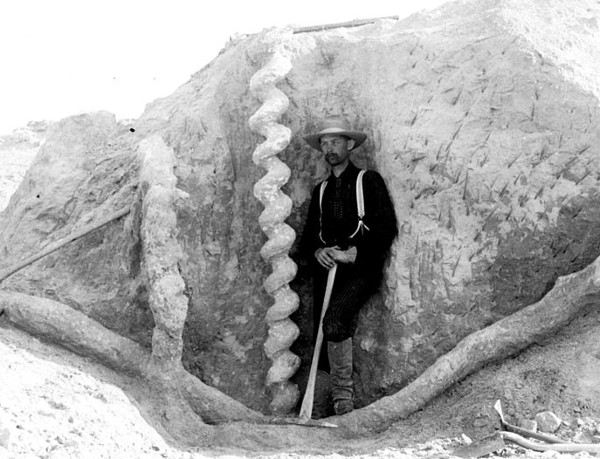
For more than 500 million years something has been making hexagonal burrows on the floor of the deep sea. Each network of tiny holes leads to a system of tunnels under the surface. The creature that makes them, known as Paleodictyon nodosum, has never been discovered. It might be a worm or perhaps a protist; the structure might be its means of farming its own food or the remains of a nest for protecting eggs. Fossils have been found in the limestone of Nevada and Mexico, and the burrows even turn up in the drawings of Leonardo da Vinci. But what makes them, and how, remain a mystery.
Somewhat related: When puzzling screw-shaped structures (below) were unearthed in Nebraska in the 1890s they were known as “devil’s corkscrews” and attributed to freshwater sponges or some sort of coiling plant. They were finally recognized as the burrows of prehistoric beavers only when a fossilized specimen, Palaeocastor, was found inside one.

(Thanks, Paul.)
